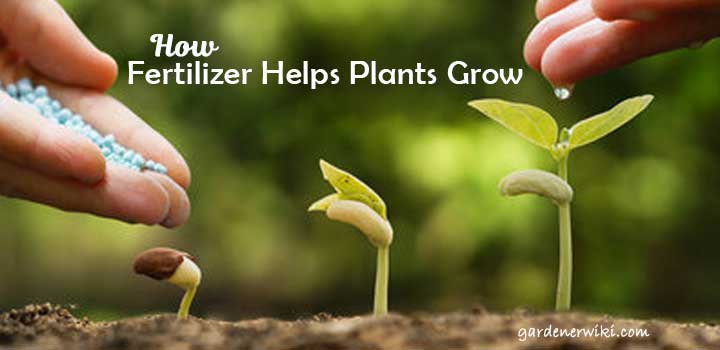As you know by now, for a plant to grow properly, it requires fertilizer. Without it, the soil will have a tough time replenishing all of the nutrients that go away due to harvesting.
But have you ever wondered how do they work? Because you clicked on this article, we guess it will be safe to say that you thought about it. Well, we did a lot of research regarding how fertilizer helps plants grow. And the things we learned truly amazed us.
So, get yourself in a comfortable position, continue reading, and get your mind blown.
What Is a Fertilizer?
Before we get deep into the topic we have in hand, let us ensure that you know what a plant fertilizer is. In true essence, it is a mixture of chemical or organic compounds that will directly link to enhance the plant’s growth.
As you can tell, there are two types of fertilizers. One is organic, and the other is inorganic. The organic one will mainly consist of organic matters. It can be animal compost, plant compost, or other naturally sourced ingredients.
Since the organic ingredients are collected from nature, the accurate measurement of the nutrient will be pretty hard to state. For that reason, you will notice that the bags will display estimated values.

On the other hand, inorganic fertilizers will not contain any sort of naturally sourced elements. Instead, these will carry chemical compounds that will provide the nutrients that plants need for growth. Because of this nature, the packages will be able to state accurate nutritional values.
That being said, it is certainly possible to make both inorganic and organic fertilizers right at home. The top zoysia grass fertilizer that we use is homemade, and it works like a charm in terms of boosting the plant’s growth.
Different Forms of Fertilizers
The fertilizers usually come in three different forms.
- Liquid
The most common form is liquid. To apply this, you would first need to dilute them. Then, spray them around the ground or near the roots of the plants.
- Powder Form
On the other hand, the second most common form is the powder form. Many might refer to this as a water-soluble form because this will also require water. The application process is a lot similar to the liquid state. You would need to spread them around and then water the ground to make them dissolve into the ground.
- Granular Form
Lastly, the granular form is a lot different than the liquid and powder forms. Instead of applying them to the ground and watering them down, you just have to spread them around. They will remain on the top and will slowly provide the nutrients as you water the plants.
How Do Fertilizers Work?

Consider a scenario where you applied fertilizer fiddle leaf fig and noticed that the plant is thriving and growing reasonably. How does it have a link with the growth of the plant? Well, that is what we are going to discuss in this segment.
The fertilizer you have applied to fertilize fiddle leaf fig provides all of the essential nutrients to the plant. It will increase the nutrient contents of the soil, which the plant is going to absorb later on. And after absorbing it, the plant will use it to make food, which will be the reason behind the growth.
Usually, the fertilizers have three main ingredients. These are called the big threes. They are “N” which stands for nitrogen, “P” which stands for phosphorus, and finally “K,” which stands for potassium.
Nitrogen
The N is the element that will increase the capacity to produce new fruits, flowers and stems. Nitrogen also does a proper job of increasing the speed of growth. It will also have a significant contribution to improving the quality of foliage and its appearance.
To compare the results, you can click a picture of the plant before applying the fertilizer. After a couple of days, click another photo and compare the two. You will notice that a lot has changed in terms of both appearance and health of the plant. Well, the nitrogen is doing most of the work here.
Phosphorus
Organic oils and starch are responsible for a robust root system. Phosphorus promotes the production of these two. It also helps develop chlorophyll which eventually allows the plant to convert solar energy into chemical energy. Plants use this chemical energy to produce simple sugar, which is their food.
The element phosphorus will also combine with potassium. And this combination will promote good health. Eventually, you will notice that the plant is producing healthy flowers in a significant quantity. That will also result in it being capable of making fruits in abundance.
Potassium
Last but not least, potassium is what the K stands for in NPK fertilizers. This element plays a crucial role in terms of the survival of the plant. It will help the plant to build the required amount of protein. And this protein will eventually help in resisting certain diseases.
After the application of potassium-enrich fertilizer, you will notice that the plant will stay healthy and full of life. Also, it works a bit like phosphorus in terms of helping out in the process of photosynthesis. The plants will get the extra boost it require and can produce their food effectively after absorbing potassium.
Overall, all of the above elements are a must for a plant to attain good health and produce many flowers and fruits. If any of these is missing in the soil, the plant will not thrive and stay in an optimal state. It might struggle to bloom flowers and produce fruits.
Final Words
To answer the question of how fertilizer helps plants grow, it basically depends on the wonders of NPK. Plants absorb these three elements and work on their health and stay productive.